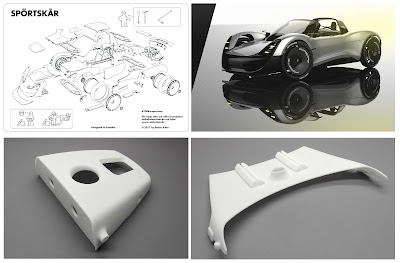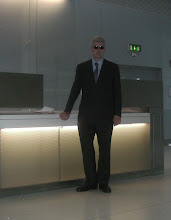Here's how to print your very own instant rechargeable battery. First coat a layer of graphite oxide, a compound containing carbon, hydrogen and oxygen, on a disc and allow it to dry. Then they place the disc in a DVD label-burning drive, then with the use of software from the company LightScribe and just press send. This software this etches labels onto CDs presentation, punch out this experment. One can remote control a conventional drone without the cost, same formula for solar panels. If the product is introduced into the market, people would be able to charge their phones fully in just ten minutes and would not have to change their laptop batteries every three years and that's a good day. From a graduate student in chemistry and biochemistry called Richard Kaner, professor in the Department of Chemistry and Biochemistry as well as the Department of Materials Science and Engineering in Egypt.
 The two had been working to develop a large-scale method for the production of graphene-based supercapacitors, a battery-like charged storage device that El-Kady said could replace the batteries used today “The special thing about (supercapacitors) is that it resonates with the public; everyone can relate to it,” said Kaner, who is the principal investigator in the study. Unlike the average battery, which is made of lithium, a graphene-based supercapacitor can be charged and recharged one million times, Kaner said. It charges quickly, and is inexpensive and easy to manufacture, he added. Graphene is the thinnest, strongest material on Earth, with a high-rate of electron transfer – properties ideal for a . The graphene-based supercapacitor charges 100,000 times faster than regular batteries and is biodegradable. Photography of printed bird house obtain Zip print file.
The two had been working to develop a large-scale method for the production of graphene-based supercapacitors, a battery-like charged storage device that El-Kady said could replace the batteries used today “The special thing about (supercapacitors) is that it resonates with the public; everyone can relate to it,” said Kaner, who is the principal investigator in the study. Unlike the average battery, which is made of lithium, a graphene-based supercapacitor can be charged and recharged one million times, Kaner said. It charges quickly, and is inexpensive and easy to manufacture, he added. Graphene is the thinnest, strongest material on Earth, with a high-rate of electron transfer – properties ideal for a . The graphene-based supercapacitor charges 100,000 times faster than regular batteries and is biodegradable. Photography of printed bird house obtain Zip print file.As I saw these Battery's in a toy tonka and thought about agricultural sciences alas just didn't hit the spot back then, in 2010. It could have save the day for a few. As El-Kadyead is the author of the study. He began working with the compound graphene in 2010. Originally, the team was working to manufacture graphene on a large scale. But when El-Kady saw the potential for graphene’s use as a battery, he and Kaner shifted their focus. To produce graphene, the researchers coat a layer of graphite oxide, a compound containing carbon, hydrogen and oxygen, on a disc and allow it to dry. Then they place the disc in a DVD label-burning drive from the company LightScribe, software that etches labels onto CDs and DVDs directly. When the laser in the drive hits graphite oxide, the compound is converted to graphene, which can be cut to emulate the shape of a battery-like coin cell used in watches. Photography of a steam unit as this could be used to drive any system efficiently.

Like in 2010 El-Kady received the Herbert Newby McCoy Award in 2012 – the highest form of recognition from UCLA’s Department of Chemistry – for the breakthrough. El-Kady and Kaner recently began talking to a company to commercialize the product and bring it to the market. The researchers plan to introduce it to consumers within the next two years, Kaner said. Electric cars are often expensive, and may not always give a good return for consumers because the technology used to power the cars is costly and not as efficient in terms of mileage, said Sanjog Misra, professor of marketing at the UCLA Anderson School of Management. If the technology in electric cars improved, and people could enduce or plug in their cars and charge them up for miles in a few minutes – using the graphene-based supercapacitors – then there could be a significant impact on the electric-car market. Generator to bring up the the charges in the capacitors, tendency to fizzle, one million cycles sounds good on a instant rechargeable. With new techniques it could lead the electric field and bus transportation. No more sulphur dioxide over 💯 particles.





No comments:
Post a Comment